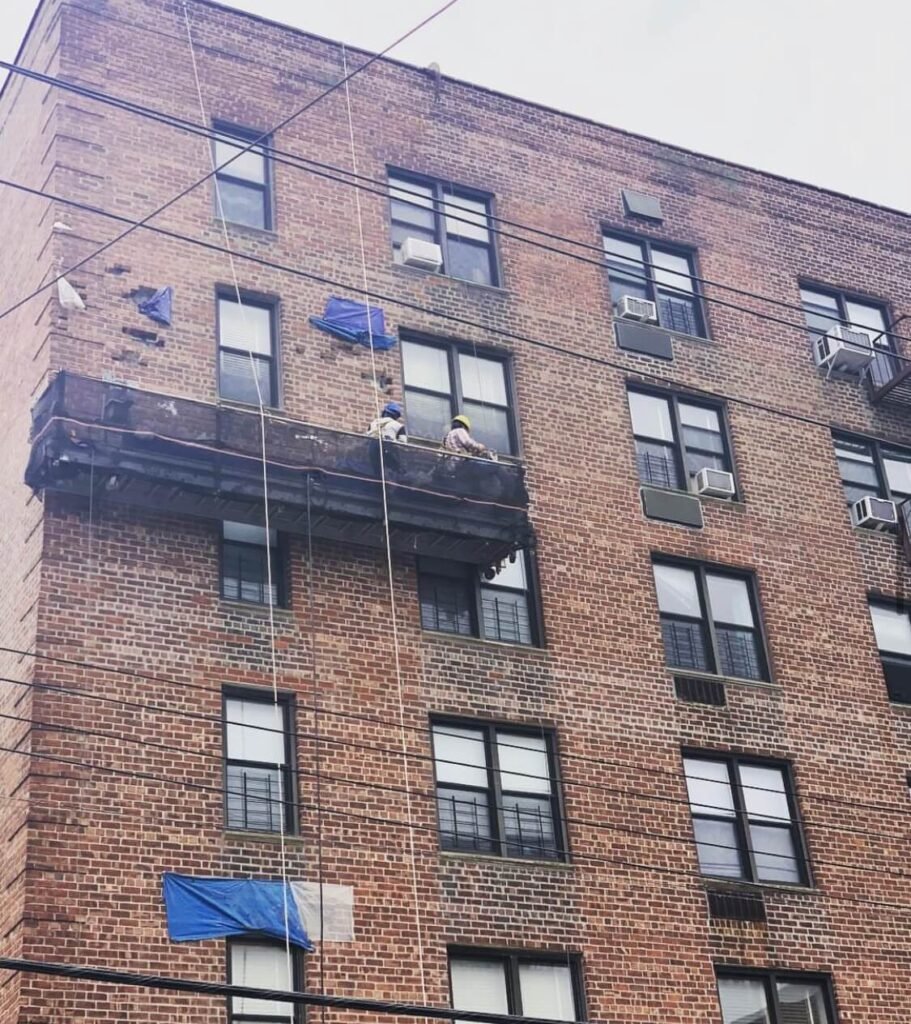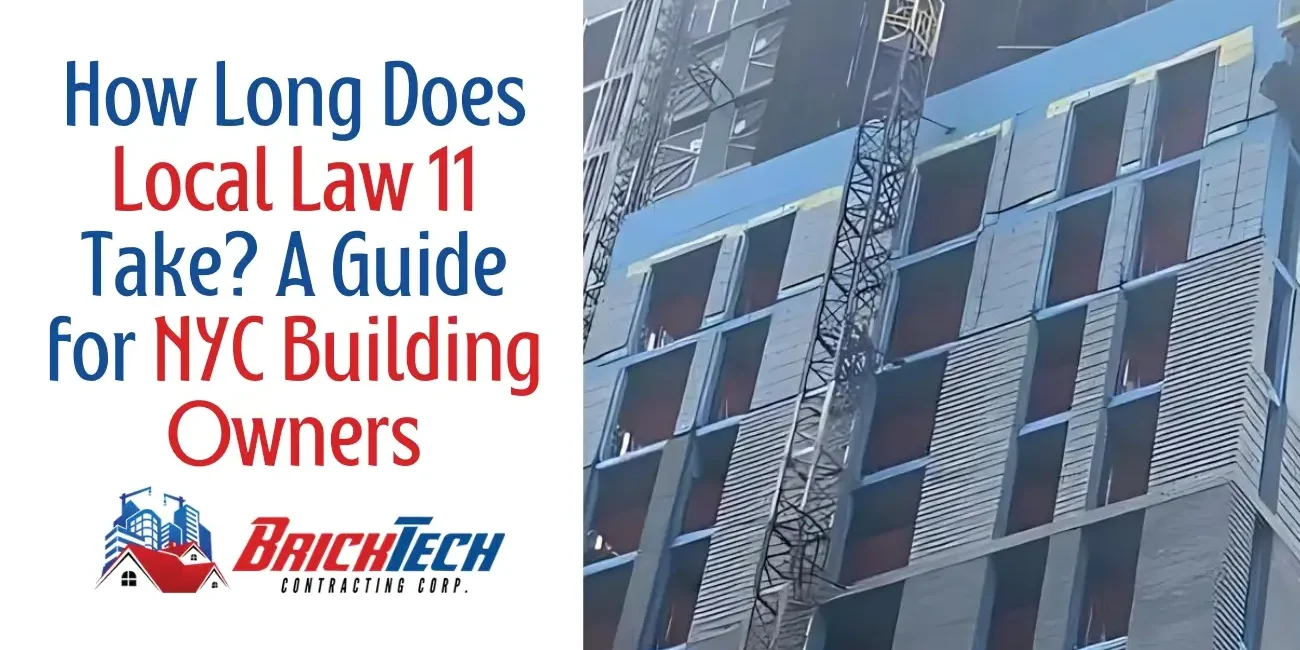Local Law 11, also known as the Facade Inspection Safety Program (FISP), is a critical regulation in New York City’s building maintenance landscape. Established to ensure the safety of the city’s aging infrastructure, it mandates regular inspections and necessary repairs of building facades to prevent accidents caused by deteriorating exteriors. Understanding and complying with Local Law 11 is essential for building owners to maintain property values, ensure public safety, and avoid hefty fines.
How Long Does Local Law 11 Take?
The entire Local Law 11 compliance process, from the initial inspection to final certification, can take anywhere from several months to a year or more, depending on several factors. This guide will explain the different phases involved and provide a general timeline for each step.
History and Purpose of Local Law 11
Local Law 11 was enacted in 1998 as an extension of Local Law 10, which was introduced in 1980 following a tragic incident where a piece of masonry fell from a building and caused a fatal accident. The primary aim of Local Law 11 is to address the shortcomings of its predecessor by expanding the scope of required inspections to include all facades of buildings over six stories tall, not just street-facing facades. This comprehensive approach ensures that potential hazards are identified and mitigated, thereby making New York City’s urban environment safer for everyone.

Detailed Breakdown of the Compliance Process
Inspection Phase
The process begins with a thorough inspection of your building’s facade by a Qualified Exterior Wall Inspector (QEWI). This inspection typically takes 1-2 days depending on the size and complexity of the building. Following the inspection, the QEWI has approximately 60 days to submit a report to the Department of Buildings (DOB).
Timeline for Inspections:
- Initial Inspection: Typically takes around 1-2 days depending on the size and complexity of the building.
- Report Submission: The QEWI has approximately 60 days after the inspection to submit a report to the Department of Buildings (DOB).
Repair Phase
If the report identifies unsafe conditions, immediate action is required. The timeline for repairs varies significantly depending on the extent of the damage. Planning and permitting can take 1-3 months, while the execution of repairs itself can range from a few weeks to several months for complex projects.
Timeline for Repairs:
- Planning and Permitting: 1-3 months, depending on the scope of work and the speed of permit issuance.
- Execution of Repairs: Varies significantly, ranging from a few weeks to several months, depending on the complexity of the repairs.
Certification Phase
Once repairs are complete, the QEWI must re-inspect the facade and certify its safety. The re-inspection typically takes 1-2 days, and the certification submission must be filed within 60 days of the re-inspection.
Timeline for Certification:
- Re-Inspection: Typically takes 1-2 days.
- Certification Submission: Must be submitted within 60 days of the re-inspection.

Case Studies of Successful Local Law 11 Compliance Projects
Case Study 1: The Empire State Building
The Empire State Building underwent a rigorous Local Law 11 compliance project that spanned over six months. Due to its historical significance and structural complexity, the project involved meticulous planning, regular coordination with the DOB, and the use of advanced materials and techniques to preserve the building’s iconic facade.
Case Study 2: A Midtown Office Building
A mid-sized office building in Midtown Manhattan completed its Local Law 11 compliance in four months. The project included replacing damaged masonry, repairing window lintels, and installing new safety netting. The swift completion was attributed to effective project management and the use of prefabricated components.
Tips for Building Owners on How to Plan for and Navigate Local Law 11 Compliance
- Start Early: Begin the inspection process well before the end of the compliance cycle to allow ample time for potential repairs.
- Hire Qualified Professionals: Engage experienced QEWIs and contractors who specialize in facade inspections and repairs.
- Budget Appropriately: Allocate sufficient funds for both the inspection and any anticipated repairs.
- Stay Informed: Keep up-to-date with any changes in Local Law 11 regulations and DOB guidelines.
- Maintain Regular Communication: Stay in regular contact with your QEWI and contractors to ensure smooth progress and timely completion.
The Impact of Local Law 11 on Property Values and Safety
Complying with Local Law 11 has a dual impact on property values and safety. On one hand, buildings that adhere to the regulations benefit from increased marketability and higher property values due to their well-maintained exteriors and enhanced safety measures. On the other hand, the rigorous inspection and repair processes significantly reduce the risk of accidents, contributing to the overall safety of New York City’s urban environment.
Conclusion
Local Law 11 is more than just a regulatory requirement; it’s a commitment to safety, preservation, and the enhancement of New York City’s architectural heritage. By ensuring your building facade meets safety standards, you’re not only protecting public safety but also safeguarding your investment and potentially increasing its value.
For a seamless Local Law 11 compliance experience, Brick Tech Contracting Corp is here to help. Our team of qualified professionals has extensive experience guiding building owners through every step of the process. We’ll work closely with you to ensure your building meets all safety standards and retains its value for years to come.
Don’t navigate Local Law 11 alone. Contact Brick Tech Contracting Corp today for a free consultation and let our expertise guide you through a smooth and successful compliance process.








